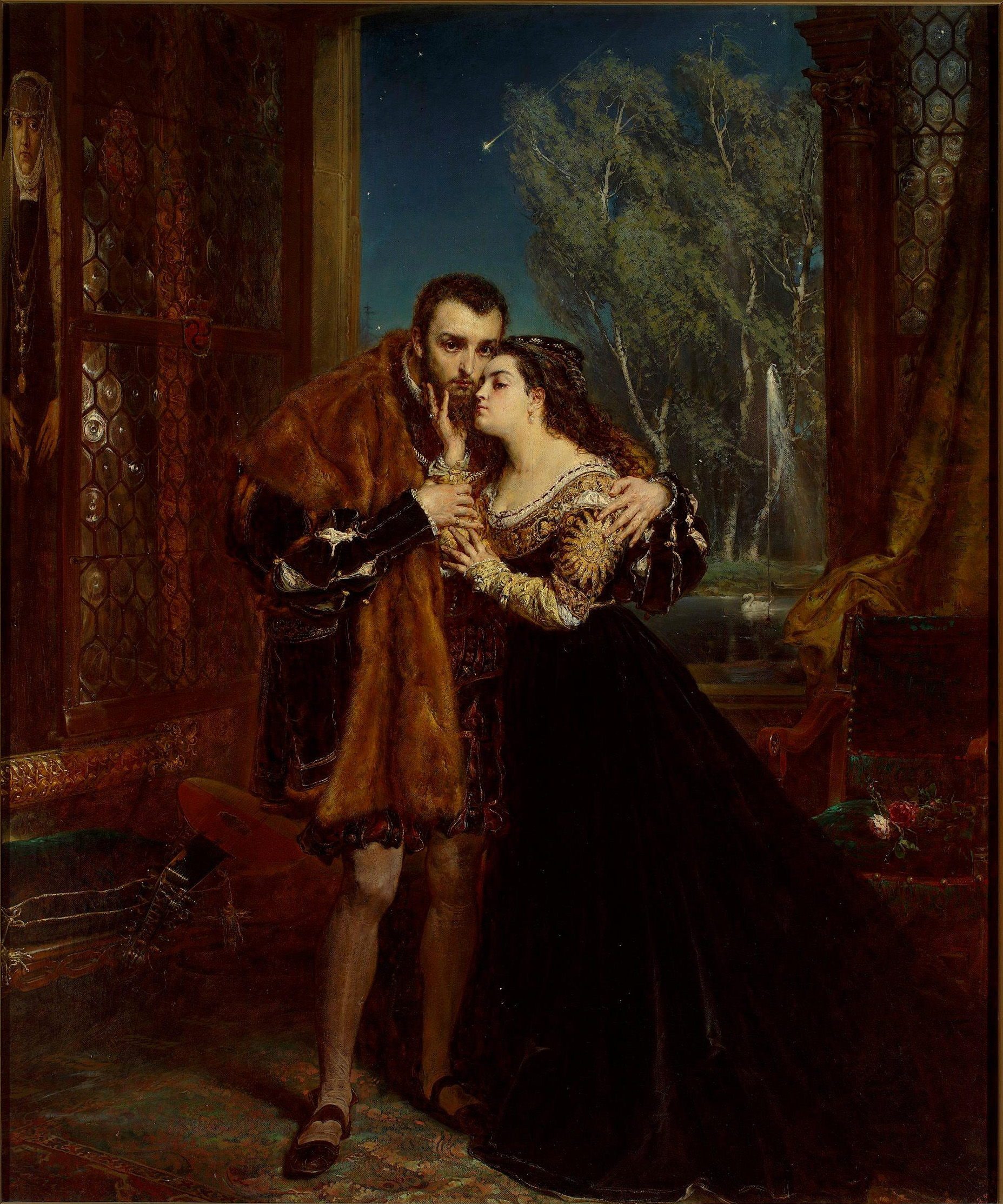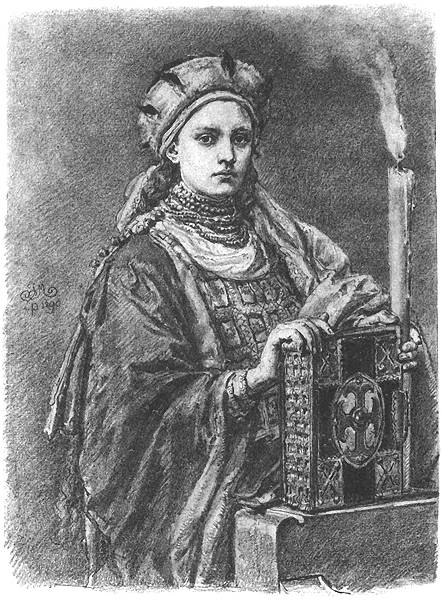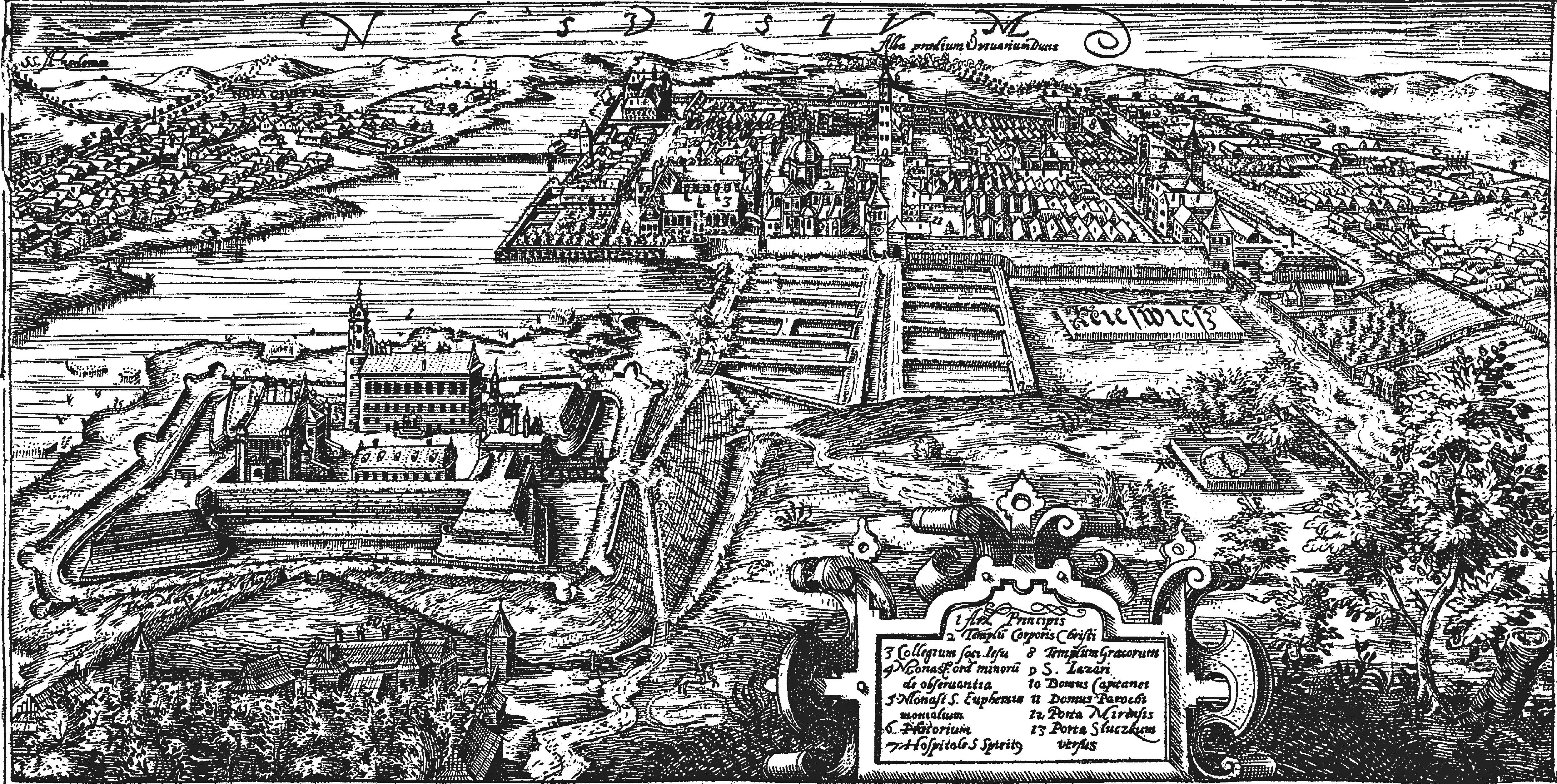|
Barbara Radziwiłł
Barbara Radziwiłł ( pl, Barbara Radziwiłłówna, lt, Barbora Radvilaitė; 6 December 1520/23 – 8 May 1551) was Queen of Poland and Grand Duchess of Lithuania as consort of Sigismund II Augustus, the last male monarch of the Jagiellon dynasty. Barbara, a great beauty and already widowed, became a royal mistress most likely in 1543 and they married in secret in July or August 1547. The marriage caused a scandal; it was vehemently opposed by Polish nobles, including Queen mother Bona Sforza. Sigismund Augustus, assisted by Barbara's cousin Mikołaj "the Black" Radziwiłł and brother Mikołaj "the Red" Radziwiłł, worked tirelessly to gain recognition of their marriage and to crown Barbara as Queen of Poland. They succeeded and Barbara's coronation was held on 7 December 1550 at Wawel Cathedral. However, her health was already failing and she died just five months later. Even though it was brief, her reign propelled the Radziwiłł family to new heights of political po ... [...More Info...] [...Related Items...] OR: [Wikipedia] [Google] [Baidu] |
Queen Consort Of Poland
The wives of the rulers of the Kingdom of Poland were duchesses or queens consort of Poland. Two women ruled Poland as queens regnant, but their husbands were kings ''jure uxoris''. Wives of early Polish monarchs Duchesses of the Polans Queens and High Duchesses of Poland Piast Dynasty (1) Přemyslid Dynasty Piast Dynasty (2) Angevin Dynasty Jagiellon Dynasty Royal consort of the Polish–Lithuanian Commonwealth * Elżbieta Szydłowska (1748–1810) was the lover of King Stanisław August. Some believe that she married the King of Poland in 1783, but their marriage was morganatic, so she wasn't Queen of Poland. However, there is no known reason for the marriage to have been morganatic, as Poniatowski's Pacta conventa required him to marry a Polish noblewoman, a requirement she satisfied, and there is no evidence that the marriage ever occurred. According to Wirydianna Fiszerowa, a contemporary who knew them both, the rumour only arose after th ... [...More Info...] [...Related Items...] OR: [Wikipedia] [Google] [Baidu] |
Jagiellon Dynasty
The Jagiellonian dynasty (, pl, dynastia jagiellońska), otherwise the Jagiellon dynasty ( pl, dynastia Jagiellonów), the House of Jagiellon ( pl, Dom Jagiellonów), or simply the Jagiellons ( pl, Jagiellonowie), was the name assumed by a cadet branch of the Lithuanian ducal dynasty of Gediminids upon reception by Jogaila, the Grand Duke of Lithuania, of baptism as Władysław in 1386, which paved the way to his ensuing marriage to the Queen Regnant Jadwiga of Poland, resulting in his ascension to the Crown of the Kingdom of Poland as Władysław II Jagiełło (initially ruling ''jure uxoris'' jointly with Hedwig until her death), and the effective promotion of his branch to a royal dynasty. The Jagiellons reigned in several Central European countries between the 14th and 16th centuries. Members of the dynasty were Kings of Poland (1386–1572), Grand Dukes of Lithuania (1377–1392 and 1440–1572), Kings of Hungary (1440–1444 and 1490–1526), and Kings of Bohemia and ... [...More Info...] [...Related Items...] OR: [Wikipedia] [Google] [Baidu] |
Polish Language
Polish (Polish: ''język polski'', , ''polszczyzna'' or simply ''polski'', ) is a West Slavic language of the Lechitic group written in the Latin script. It is spoken primarily in Poland and serves as the native language of the Poles. In addition to being the official language of Poland, it is also used by the Polish diaspora. There are over 50 million Polish speakers around the world. It ranks as the sixth most-spoken among languages of the European Union. Polish is subdivided into regional dialects and maintains strict T–V distinction pronouns, honorifics, and various forms of formalities when addressing individuals. The traditional 32-letter Polish alphabet has nine additions (''ą'', ''ć'', ''ę'', ''ł'', ''ń'', ''ó'', ''ś'', ''ź'', ''ż'') to the letters of the basic 26-letter Latin alphabet, while removing three (x, q, v). Those three letters are at times included in an extended 35-letter alphabet, although they are not used in native words. The traditiona ... [...More Info...] [...Related Items...] OR: [Wikipedia] [Google] [Baidu] |
Nesvizh
Nesvizh, Niasviž ( be, Нясві́ж ; lt, Nesvyžius; pl, Nieśwież; russian: Не́свиж; yi, ניעסוויז; la, Nesvisium) is a city in Belarus. It is the administrative centre of the Nyasvizh District (''rajon'') of Minsk Region and site of Niasviž Castle, a World Heritage Site. Its 2009 population is 14,300. History Nesvizh was first documented in 1223. It was part of the Grand Duchy of Lithuania until 1793, but the Grand Duchy was part of the Polish–Lithuanian Commonwealth since 1569. In the 15th century, while still a minor town, it belonged to the Kiszka family and later to the Radziwiłł family, and remained the family's seat until 1813. In 1561 or 1562 Maciej Kawęczyński founded the print works of the Polish Brethren. The first Belarusian language book printed in Latin script, a catechism by Symon Budny, was published in Nesvizh in 1562. The ''Nieśwież Bible'' ('' Biblia nieświeska''), one of the oldest Polish translations of the Bible, also b ... [...More Info...] [...Related Items...] OR: [Wikipedia] [Google] [Baidu] |
Voivode Of Podolia
The Podolian Voivodeship, uk, Подільське воєводство or Palatinate of Podolia was a unit of administrative division and local government in the Kingdom of Poland, since 1434 until 1793, except for the period of Ottoman occupation (1672–1699), when the region was organized as Podolia Eyalet. Together with the Bracław Voivodeship it formed the region of Podolia, which in the Kingdom of Poland was part of Lesser Poland Province. Its capital was in Kamianets-Podilskyi, where local sejmiks took place and where the seat of the starosta was as well. The voivodeship was created 1434, out of former Duchy of Podolia, which had become part of the Kingdom of Poland in the second half of the 14th century. After the second partition of Poland (see: Partitions of Poland), it was seized by the Russian Empire, which in 1793 created the Podolia Governorate. Today the region belongs to Ukraine. Zygmunt Gloger in his monumental book ''Historical Geography of the Lands of ... [...More Info...] [...Related Items...] OR: [Wikipedia] [Google] [Baidu] |
Great Lithuanian Hetman
Great may refer to: Descriptions or measurements * Great, a relative measurement in physical space, see Size * Greatness, being divine, majestic, superior, majestic, or transcendent People * List of people known as "the Great" *Artel Great (born 1981), American actor Other uses * ''Great'' (1975 film), a British animated short about Isambard Kingdom Brunel * ''Great'' (2013 film), a German short film * Great (supermarket), a supermarket in Hong Kong * GReAT, Graph Rewriting and Transformation, a Model Transformation Language * Gang Resistance Education and Training Gang Resistance Education And Training, abbreviated G.R.E.A.T., provides a school-based, police officer instructed program that includes classroom instruction and various learning activities. Their intention is to teach the students to avoid gang ..., or GREAT, a school-based and police officer-instructed program * Global Research and Analysis Team (GReAT), a cybersecurity team at Kaspersky Lab *'' Great!'', a 20 ... [...More Info...] [...Related Items...] OR: [Wikipedia] [Google] [Baidu] |
Voivode Of Vilnius
The Voivode of Vilnius ( lt, Vilniaus vaivada, pl, wojewoda wileński) was a high-ranking officer in the Grand Duchy of Lithuania who governed the Vilnius Voivodeship from 1413. He was considered as the most influential member of the Lithuanian Council of Lords. After the Union of Lublin in 1569, the Voivodes of Vilnius (who were senators of the Polish–Lithuanian Commonwealth) were ranked as the fourth highest, while the Castellans of Vilnius were ranked as the sixth highest officers among the Voivodeships of the Polish–Lithuanian Commonwealth. After the Third Partition of the Commonwealth, the Vilnius Voivodeship was annexed by the Russian Empire The Russian Empire was an empire and the final period of the List of Russian monarchs, Russian monarchy from 1721 to 1917, ruling across large parts of Eurasia. It succeeded the Tsardom of Russia following the Treaty of Nystad, which ended th ... and this position was annulled. Elders of Vilnius Voivodes of Vilnius Referen ... [...More Info...] [...Related Items...] OR: [Wikipedia] [Google] [Baidu] |
Voivode Of Trakai
lt, Trakų vaivadija pl, Województwo trockie , conventional_long_name = Trakai Voivodeship , common_name = Trakai , subdivision = Voivodeship , nation = Grand Duchy of Lithuania (1413–1569) Polish–Lithuanian Commonwealth (1569–1795) , year_start = 1413 , event_start = Established by Union of Horodło , event_end = Third Partition of the Polish-Lithuanian Commonwealth , year_end = 1795 , event1 = Union of Lublin , date_event1 = 1569 , p1 = Duchy of Trakai , image_p1 = , s1 = Vilna Governorate , image_s1 = , s2 = Slonim Governorate , flag_s2 = Flag of Russia.svg , s3 = Province of East Prussia , flag_s3 = Flagge Preußen - Provinz Ostpreußen.svg , s4 = Podlaskie Voivodeship (1513–1795) , image_s4 = , image_flag = Flag of Trakai Voivodeship (1569-1795)-1.svg , image_coat = Recueil d'armoiries polonaises COA of Trakai Voivodeship.png , image_map = Trakai Voivodeship within Lithuania in the 17th century.png , image_map_caption = Trakai Voivodeship (in red) in the 17th cent ... [...More Info...] [...Related Items...] OR: [Wikipedia] [Google] [Baidu] |
Kingdom Of Poland (1385–1569)
The Crown of the Kingdom of Poland ( pl, Korona Królestwa Polskiego; Latin: ''Corona Regni Poloniae''), known also as the Polish Crown, is the common name for the historic Late Middle Ages territorial possessions of the King of Poland, including the Kingdom of Poland proper. The Polish Crown was at the helm of the Polish–Lithuanian Commonwealth from 1569 to 1795. Major political events The Kingdom of Poland has been traditionally dated back to c. 966, when Mieszko I and his pagan Slavic realm joined Christian Europe ( Baptism of Poland), establishing the state of Poland, a process started by his Polan Piast dynasty ancestors. His oldest son and successor, Prince Bolesław I Chrobry, Duke of Poland, became the first crowned King of Poland in 1025. Union of Krewo The Union of Krewo was a set of prenuptial agreements made in the Kreva Castle on August 13, 1385. Once Jogaila confirmed the prenuptial agreements on August 14, 1385, Poland and Lithuania formed a perso ... [...More Info...] [...Related Items...] OR: [Wikipedia] [Google] [Baidu] |
Witchcraft
Witchcraft traditionally means the use of magic or supernatural powers to harm others. A practitioner is a witch. In medieval and early modern Europe, where the term originated, accused witches were usually women who were believed to have used malevolent magic against their own community, and often to have communed with evil beings. It was thought witchcraft could be thwarted by protective magic or counter-magic, which could be provided by cunning folk or folk healers. Suspected witches were also intimidated, banished, attacked or killed. Often they would be formally prosecuted and punished, if found guilty or simply believed to be guilty. European witch-hunts and witch trials in the early modern period led to tens of thousands of executions. In some regions, many of those accused of witchcraft were folk healers or midwives. European belief in witchcraft gradually dwindled during and after the Age of Enlightenment. Contemporary cultures that believe in magic and the s ... [...More Info...] [...Related Items...] OR: [Wikipedia] [Google] [Baidu] |
Wawel Cathedral
The Wawel Cathedral ( pl, Katedra Wawelska), formally titled the Royal Archcathedral Basilica of Saints Stanislaus and Wenceslaus, is a Roman Catholic cathedral situated on Wawel Hill in Kraków, Poland. Nearly 1000 years old, it is part of the Wawel Castle Complex and is a national sanctuary which served as the coronation site of Polish monarchs. The current Gothic cathedral is the third edifice on this site; the first was constructed and destroyed in the 11th century and the second one, constructed in the 12th century, was destroyed by a fire in 1305. The construction of the existing church began in the 14th century on the orders of Bishop Nanker. Over time, the building was expanded by successive rulers resulting in its versatile and eclectic architectural composition. There are examples of Romanesque, Gothic, Renaissance, Baroque, Neoclassical and Neogothic elements in the cathedral's façade and interior. The exterior is adorned by side chapels and representative ma ... [...More Info...] [...Related Items...] OR: [Wikipedia] [Google] [Baidu] |
Mikołaj "the Red" Radziwiłł
Mikołaj Radziwiłł, nicknamed ''The Red'' (Polish ''Rudy'', Lithuanian: ''Radvila Rudasis''), also known as ''Mikołaj Radziwiłł the Sixth'' (1512 – 27 April 1584), was a Polish–Lithuanian nobleman, Count Palatine of Vilnius, Grand Chancellor of Lithuania, and Grand Lithuanian Hetman (from 1576) in the Grand Duchy of Lithuania and later in Polish–Lithuanian Commonwealth. Together with his cousin Mikołaj "the Black" Radziwiłł and the Radziwiłł family were granted title and position as Reichsfürst Prince of the Holy Roman Empire. Mikołaj Radziwiłł spent many years as a military commander. While not the most famous of Commonwealth hetmans, under king Stefan Batory he was fairly successful in defending the eastern borders of the Commonwealth against the Muscovy. One of his most notable victories was achieved during the Battle of Ula of 1564 when his commanded forces defeated much larger Ivan the Terrible's forces. His political career was marked by his all ... [...More Info...] [...Related Items...] OR: [Wikipedia] [Google] [Baidu] |



